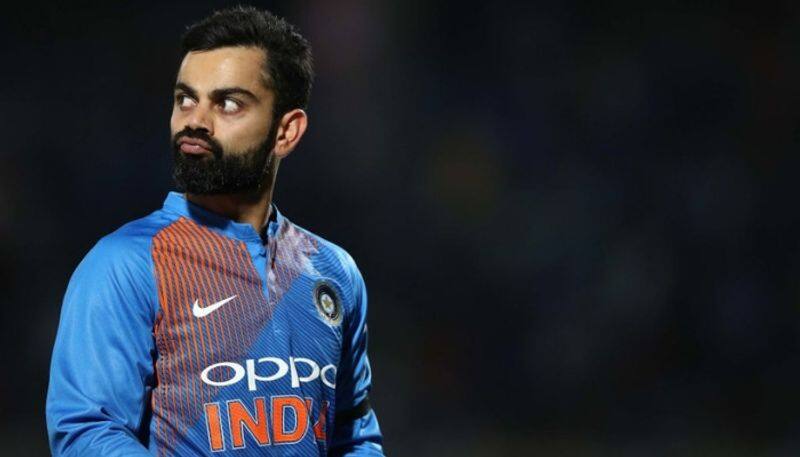With India getting upstaged in both the encounters, there has been a fault in the approach. But what actually went wrong for India? MyNation brings to you the 5 things which went wrong for team India in the T20 series.
New Delhi: The second and final T20 International between India and Australia turned out to be a closely-fought affair. In the end, the visitors, led by Aaron Finch, won the match at the M Chinnaswamy Stadium, Bengaluru by seven wickets, courtesy to a sensational batting display from Australia’s middle-order powerhouse Glenn Maxwell. With the stupendous triumph, the Aussies clinched their maiden T20 series in India to script history.
On the other hand, this series was Indian skipper Virat Kohli's first series loss on the Indian soil. It wouldn’t be wrong to say that the show put up by Glenn Maxwell led to the difference between the two sides on both occasions. With the World Cup only a few months away and a couple of series against the men-in-yellow being India’s last assignment, is it the best situation for India to be in?
Well, many cricket pundits have already termed this loss as a ‘loss’ for India B team, with many regular faces being tested to manage the workload and also to test a few players. However, with India getting upstaged in both the encounters, there has been a fault in the approach. But what actually went wrong for India?
MyNation brings to you the 5 things which went wrong for team India in the T20 series.
1. Lack of penetration with the new ball:
In both the games against the Aussies, the Indian new-ball bowlers except Jasprit Bumrah sprayed the ball around and gave the hosts a number of boundary balls only to be dismissed to the fence.
Yes, they missed the service of Jasprit Bumrah with the new ball who has been instrumental in India's success as a limited-overs side but it was a timely reminder to the management to ensure that there are enough replacements and backups ready, in case of such freak injuries during the 2019 World Cup.
The likes of Umesh Yadav, Siddarth Kaul, Vijay Shankar failed to exercise enough control and Bhuvneshwar Kumar’s absence was well reflected on the field. Going into the World Cup, this problem may concern India in more than one way.
2. No Authority by the wrist spinners:
It wouldn’t be wrong to say that the men-in-blue have overly relied on wrist spinners from last year and a half for breakthroughs in the middle overs. However, on this occasion, the wrist spinners were just not able to show the authority. In Kuldeep Yadav’s absence, Yuzvendra Chahal struggled to find his rhythm and went for a lot of runs.
Mayank Markande, who played just one encounter, didn’t do any good too, as Glenn Maxwell along with D Arcy Short picked his length to perfection and dominated the debutant with ease. Enroute ODI set up, the team management and skipper would be expecting Yuzvendra Chahal to get his form back and tumble the opposition’s wickets.
3. Shikhar Dhawan’s struggle continues:
India’s prime opener Shikhar Dhawan has been struggling for form for quite some time now. He failed in Australia, in New Zealand, and his struggle continued in the second-and-only-T20 he played at home. It’s no secret that the India team relies a lot on their top-3 to get the runs, and with one being out of form, for near to three months now, this is surely one of the biggest concerns for India heading into the big event.
The balls that he played, quite evidently showed that he was struggling to find his touch. He was hardly seen timing the ball to perfection. The ODI series will once again be an opportunity for him to prove his stature.
4. Capitalize on the big moments:
In both the encounters, India managed to send Aaron Finch and Marcus Stoinis back to the pavilion for low scores and in the power play, India was on top. However, India wasn’t able to capitalize on those moments which probably shaped the game against their favor on two occasions.
Even in batting, KL Rahul provided India with a decent stat, however, India lost a lot of wickets in the middle overs, letting them end for a below par score. Further, this remains to be seen if India can bounce back strong and show what they are capable of in the five-match ODI series.
5. The middle order muddle:
The topic keeps coming up after every series that India plays. The middle order musical chair has made the Indian team look less competitive to what they can actually be. Quite a few players were tested; however, Rishabh Pant and Dinesh Karthik failed to show that authority in the middle, with the former getting out playing rash shots on both the occasions.
The muddle needs to be put to rest if at all India is looking for a clear dominance in the forthcoming World Cup.
It will be interesting to see if the India team addresses these points ahead of the first game which is scheduled to be played on March 2 at the iconic Rajiv Gandhi International Stadium, Hyderabad.
Last Updated Mar 1, 2019, 4:46 PM IST











![Salman Khan sets stage on fire for Anant Ambani, Radhika Merchant pre-wedding festivities [WATCH] ATG](https://static-ai.asianetnews.com/images/01hr1hh8y86gvb4kbqgnyhc0w0/whatsapp-image-2024-03-03-at-12-24-37-pm_100x60xt.jpg)
![Pregnant Deepika Padukone dances with Ranveer Singh at Anant Ambani, Radhika Merchant pre-wedding bash [WATCH] ATG](https://static-ai.asianetnews.com/images/01hr1ffyd3nzqzgm6ba0k87vr8/whatsapp-image-2024-03-03-at-11-45-35-am_100x60xt.jpg)


